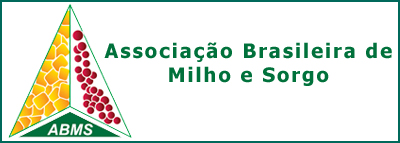SAMPLE SIZE FOR THE ESTIMATION OF SOME SORGHUM TRAITS
DOI:
https://doi.org/10.18512/1980-6477/rbms.v4n02p%25pPalavras-chave:
Sorghum bicolor (L.) Moench, altura da planta.Resumo
Sorghum research, just like any research involving other crops, requires a knowledge of experimental techniques that will provide the maximum precision with a minimum of resources. The objective of the present work was to evaluate the implications of sampling size over the results obtained with the application of tests F and Tukey in the analysis of sorghum traits variance. Another objective was to identify ideal sample sizes for those traits, by using two methods: use of the experimental coefficient of variation value (CV) alone; use of formula involving the variance of an estimated plot mean based on a sampling units. Eight sorghum cultivars were evaluated in a random block design with four replicates. All plants in the plot (45), in addition to eight sample sizes (varying from 5 to 40 units, at 5-unit intervals) were utilized to evaluate plant height (PH), dry matter in the vegetative above-ground part of the plant (without the panicle) (DMP), length (PL), and panicle dry matter (PDM). It was observed that the F and Tukey tests, based on samples, could result in different conclusions from those obtained when all plants in the plot are utilized to evaluate DMP and PDM. About 25 units represent samples for the estimation of the four characteristics, when the CV value is used. The adoption of the sample size formula proved that to estimate PH, DMP, PL, and PDM, the ideal sample sizes would be 14 plants, 11 plants, 14 panicles, and 24 panicles, respectively.
Downloads
Publicado
Como Citar
Edição
Seção
Licença
Autores que publicam nesta revista concordam com os seguintes termos:- Autores mantém os direitos autorais e concedem à revista o direito de primeira publicação, com o trabalho simultaneamente licenciado sob a Creative Commons Attribution License que permitindo o compartilhamento do trabalho com reconhecimento da autoria do trabalho e publicação inicial nesta revista.
- Autores têm autorização para assumir contratos adicionais separadamente, para distribuição não-exclusiva da versão do trabalho publicada nesta revista (ex.: publicar em repositório institucional ou como capítulo de livro), com reconhecimento de autoria e publicação inicial nesta revista.
- Autores têm permissão e são estimulados a publicar e distribuir seu trabalho online (ex.: em repositórios institucionais ou na sua página pessoal) a qualquer ponto antes ou durante o processo editorial, já que isso pode gerar alterações produtivas, bem como aumentar o impacto e a citação do trabalho publicado



